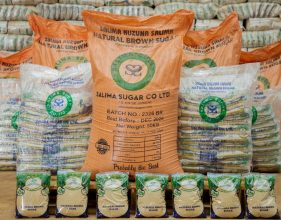Maize price up
Malawi’s maize prices have started soaring with a recent report showing an average rise of 4.8 percent, which is above the five-year price average.
According the report by the Southern Region Food and Nutrition (Southern Africa) for November 2015, the Malawi maize price increment has been triggered by an increased number of households relying entirely on market purchases against limited supplies.
A snap survey by Business News in some markets indicates that a 50 kilogramme bag of maize is selling at K10 000 (about $15) at Chirimba in Blantyre and Nsanje, K9 600 (about $14.7) in Mzuzu, K9 500 (about $14.5) in Zomba and K9 000 (about $13.8) in Lilongwe.
The food basket , which is predominantly maize, contributes about 58 percent to Malawi Consumer Price Index (CPI) calculations.
The rise in the maize price, therefore, points to an increase in inflation rate as shown recently.
The November inflation rate stands at 24.6 percent, a slight decline from October’s 24.7 percent.
The cost of living in cities, according to the Centre for Social Concern (CfSC) also alludes to this.
The CfSC report indicates that the cost of living in October went up. It says in October, prices of maize pushed up by a further 2.6 percent to K7 453 per bag of 50kg—with prices as high as K8 500 and K 8 417 per equivalent bag of 50kg in urban areas of Zomba and Blantyre, respectively.
“The total basket went up by 3 percent to K131 207 and the food basket shot up by 2.6 percent to K78 038 in October. During the same period last October, the food basket went down by 1.23 percent (K60 571 to K59 813) and the total basket slightly went up by 0.02 percent (K106 612.5 to K106 632.2).
Maggie Nkhata—a Chirimba-based maize seller—however, said the prices are justifiable as the cost of getting the staple food to the market has also gone up.
“I go to as far as Dedza to buy maize for resell, but since the times are bad, maize prices even from where we buy in bulk have gone up, so has transport cost. I have no choice but to sell my maize at K10 000 per bag, to sustain my business,” she said.
But it is buyers who are being left to offset costs being incurred by the traders.
“We are now failing to access a full bag of maize because the prices are just a scare. We can only manage a few kilogrammes at a time because we cannot fetch enough money to buy the
whole bag,” said one Charity Mkandawire, a Rumphi-based tobacco farmer.
Mkandawire is just one of the many people in the region feeling the pinch of the escalating maize prices.
“The region as a whole is well above the five-year price average: Mozambique: 41.9 percent (retail); South Africa: 34.9 percent (wholesale); Tanzania: 19 percent (wholesale); Lesotho: 15.9 percent (maize meal retail); Malawi: 4.8 percent (retail); Zambia: 3 percent (retail).
“This highlights the region’s general lack of maize stock and illustrates high levels of households’ stress levels due to strained market access,” reads the report.
The report warns: “As typical during the peak lean season, staple prices are expected to reach their maximum level from January through March. Based on price projections from a number of regional countries, including Zimbabwe, Malawi and Lesotho, maize prices increases are likely to increase by 20-75 percent. These increases are expected to further exert pressure on poor households whose purchasing power is weakened by limited income sources”.
In an earlier interview, Civil Society Agricultural Network (Cisanet) national coordinator, Tamani Nkhono-Mvula said that the country must deal with post harvest losses and diversify to other food crops as one way of handling seasonal lean period.
He encouraged Malawians to diversify to food crops such as cassava whose harvests can be delayed.
In September, Fewsnet indicated that the average maize prices would rise between October and December 2015, a development which would put pressure on households and trigger a rapid rise in inflation rate, which is currently at 24.1 percent for September, according to National Statistics Office (NSO).
In the year just ended, Malawi faced a 30.2 percent decrease in maize production from 3 978 123 metric tonnes the previous year to 2 776 277 metric tonnes, which is 223 723 metric tonnes less. n





